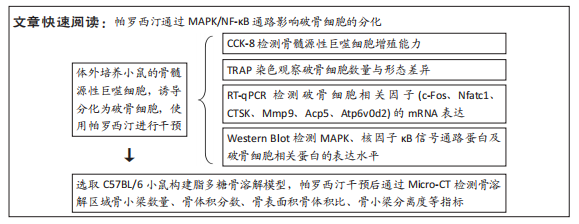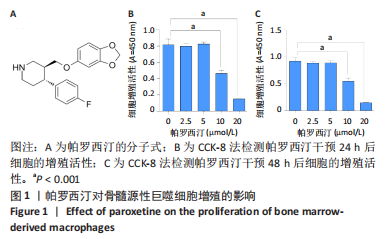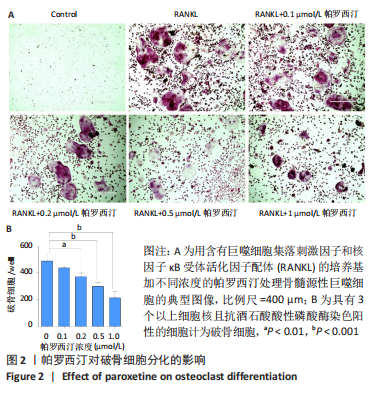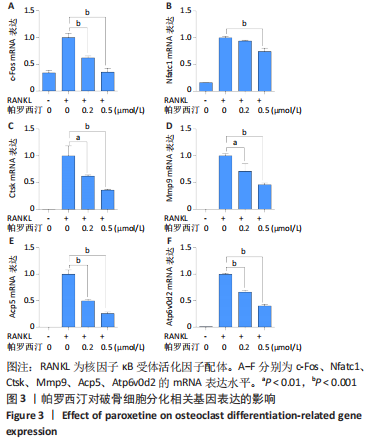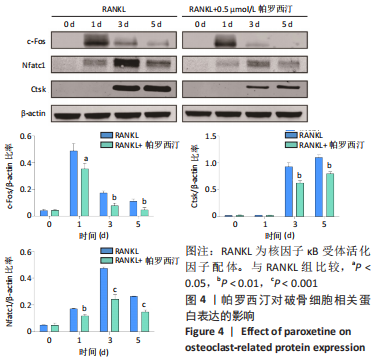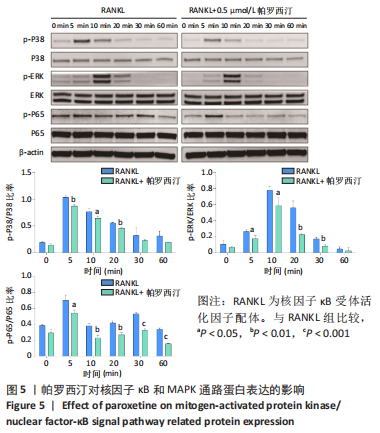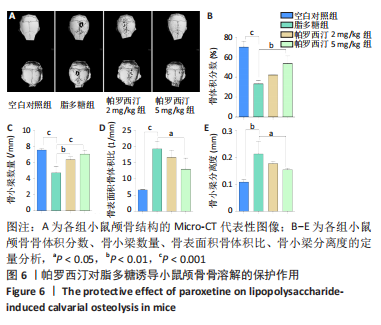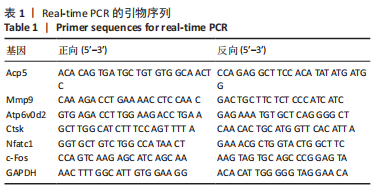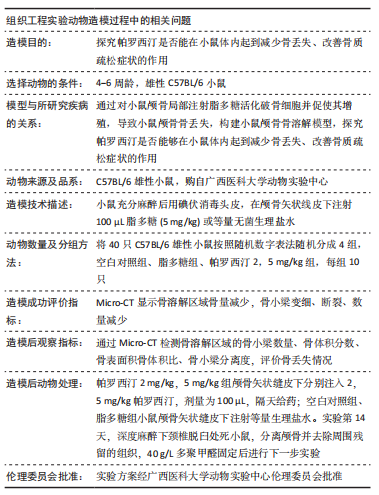[1] BIJLSMA AY, MESKERS CG, WESTENDORP RG, et al. Chronology of age-related disease definitions: Osteoporosis and sarcopenia. Ageing Res Rev. 2012;11(2):320-324.
[2] ASPRAY TJ, HILL TR. Osteoporosis and the ageing skeleton. Subcell Biochem. 2019;91:453-476.
[3] HASEGAWA T, KIKUTA J, SUDO T, et al. Identification of a novel arthritis-associated osteoclast precursor macrophage regulated by foxm1. Nat Immunol. 2019;20(12):1631-1643.
[4] BROWN JP. Long-term treatment of postmenopausal osteoporosis. Endocrinol Metab (Seoul). 2021;36(3):544-552.
[5] SHANE E, BURR D, ABRAHAMSEN B, et al. Atypical subtrochanteric and diaphyseal femoral fractures: Second report of a task force of the american society for bone and mineral research. J Bone Miner Res. 2014;29(1):1-23.
[6] LANGDAHL B. Treatment of postmenopausal osteoporosis with bone-forming and antiresorptive treatments: Combined and sequential approaches. Bone. 2020;139:115516.
[7] ZHAO X, PATIL S, XU F, et al. Role of biomolecules in osteoclasts and their therapeutic potential for osteoporosis. Biomolecules. 2021; 11(5):747.
[8] UDAGAWA N, KOIDE M, NAKAMURA M, et al. Osteoclast differentiation by rankl and opg signaling pathways. J Bone Miner Metab. 2021;39(1): 19-26.
[9] KIM JH, KIM K, KIM I, et al. Bcap promotes osteoclast differentiation through regulation of the p38-dependent creb signaling pathway. Bone. 2018;107:188-195.
[10] CHAWEEWANNAKORN W, ARIYOSHI W, OKINAGA T, et al. Ameloblastin attenuates rankl-mediated osteoclastogenesis by suppressing activation of nuclear factor of activated t-cell cytoplasmic 1 (nfatc1). J Cell Physiol. 2019;234(2):1745-1757.
[11] KOWALSKA M, NOWACZYK J, FIJALKOWSKI L, et al. Paroxetine-overview of the molecular mechanisms of action. Int J Mol Sci. 2021;22(4):1662.
[12] LIU RP, ZOU M, WANG JY, et al. Paroxetine ameliorates lipopolysaccharide-induced microglia activation via differential regulation of mapk signaling. J Neuroinflammation. 2014;11:47.
[13] ZHANG X, ZHU LB, HE JH, et al. Paroxetine suppresses reactive microglia-mediated but not lipopolysaccharide-induced inflammatory responses in primary astrocytes. J Neuroinflammation. 2020;17(1):50.
[14] XIE H, CHUNG DY, KURA S, et al. Differential effects of anesthetics on resting state functional connectivity in the mouse. J Cereb Blood Flow Metab. 2020;40(4):875-884.
[15] CARLSON EL, KARUPPAGOUNDER V, PINAMONT WJ, et al. Paroxetine-mediated grk2 inhibition is a disease-modifying treatment for osteoarthritis. Sci Transl Med. 2021;13(580):eaau8491.
[16] VERDELIS K, SALMON P. Microcomputed tomography imaging in odontogenesis studies. Methods Mol Biol. 2019;1922:309-324.
[17] JOHNSTON CB, DAGAR M. Osteoporosis in older adults. Med Clin North Am. 2020;104(5):873-884.
[18] KANIS JA, COOPER C, RIZZOLI R, et al. European guidance for the diagnosis and management of osteoporosis in postmenopausal women. Osteoporos Int. 2019;30(1):3-44.
[19] REID IR. A broader strategy for osteoporosis interventions. Nat Rev Endocrinol. 2020;16(6):333-339.
[20] FISCHER V, HAFFNER-LUNTZER M. Interaction between bone and immune cells: Implications for postmenopausal osteoporosis. Semin Cell Dev Biol. 2022;123:14-21.
[21] DA W, TAO L, ZHU Y. The role of osteoclast energy metabolism in the occurrence and development of osteoporosis. Front Endocrinol (Lausanne). 2021;12:675385.
[22] AMIN N, BOCCARDI V, TAGHIZADEH M, et al. Probiotics and bone disorders: The role of rankl/rank/opg pathway. Aging Clin Exp Res. 2020;32(3):363-371.
[23] HUANG L, CHEN W, WEI L, et al. Lonafarnib inhibits farnesyltransferase via suppressing erk signaling pathway to prevent osteoclastogenesis in titanium particle-induced osteolysis. Front Pharmacol. 2022;13:848152.
[24] XIAN Y, SU Y, LIANG J, et al. Oroxylin a reduces osteoclast formation and bone resorption via suppressing rankl-induced ros and nfatc1 activation. Biochem Pharmacol. 2021;193:114761.
[25] XU W, CHEN X, WANG Y, et al. Chitooligosaccharide inhibits rankl-induced osteoclastogenesis and ligation-induced periodontitis by suppressing mapk/ c-fos/nfatc1 signaling. J Cell Physiol. 2020;235(3): 3022-3032.
[26] CONG Q, JIA H, LI P, et al. P38alpha mapk regulates proliferation and differentiation of osteoclast progenitors and bone remodeling in an aging-dependent manner. Sci Rep. 2017;7:45964.
[27] LEE S, RAUCH J, KOLCH W. Targeting mapk signaling in cancer: Mechanisms of drug resistance and sensitivity. Int J Mol Sci. 2020; 21(3):1102.
[28] KANG JY, KANG N, YANG YM, et al. The role of ca(2+)-nfatc1 signaling and its modulation on osteoclastogenesis. Int J Mol Sci. 2020;21(10): 3646.
[29] YANG Y, CHUNG MR, ZHOU S, et al. Stat3 controls osteoclast differentiation and bone homeostasis by regulating nfatc1 transcription. J Biol Chem. 2019;294(42):15395-15407.
[30] XIAO L, ZHONG M, HUANG Y, et al. Puerarin alleviates osteoporosis in the ovariectomy-induced mice by suppressing osteoclastogenesis via inhibition of traf6/ros-dependent mapk/nf-kappab signaling pathways. Aging (Albany NY). 2020;12(21):21706-21729.
[31] KOGA Y, TSURUMAKI H, AOKI-SAITO H, et al. Roles of cyclic amp response element binding activation in the erk1/2 and p38 mapk signalling pathway in central nervous system, cardiovascular system, osteoclast differentiation and mucin and cytokine production. Int J Mol Sci. 2019;20(6):1346.
[32] YU H, LIN L, ZHANG Z, et al. Targeting nf-kappab pathway for the therapy of diseases: Mechanism and clinical study. Signal Transduct Target Ther. 2020;5(1):209.
[33] BARNABEI L, LAPLANTINE E, MBONGO W, et al. Nf-kappab: At the borders of autoimmunity and inflammation. Front Immunol. 2021; 12:716469.
[34] LAMPIASI N, RUSSO R, ZITO F. The alternative faces of macrophage generate osteoclasts. Biomed Res Int. 2016;2016:9089610.
[35] YASUDA H. Discovery of the rankl/rank/opg system. J Bone Miner Metab. 2021;39(1):2-11.
[36] SUL OJ, PARK HJ, SON HJ, et al. Lipopolysaccharide (lps)-induced autophagy is responsible for enhanced osteoclastogenesis. Mol Cells. 2017;40(11):880-887.
[37] CARR HS, CHANG JT, FROST JA. The pdz domain protein synj2bp regulates grk-dependent sst2a phosphorylation and downstream mapk signaling. Endocrinology. 2021;162(2):bqaa229.
[38] SUN X, ZHOU M, WEN G, et al. Paroxetine attenuates cardiac hypertrophy via blocking grk2 and adrb1 interaction in hypertension. J Am Heart Assoc. 2021;10(1):e016364.
[39] HU K, OLSEN BR. Osteoblast-derived vegf regulates osteoblast differentiation and bone formation during bone repair. J Clin Invest. 2016;126(2):509-526.
[40] CHEN X, WANG Z, DUAN N, et al. Osteoblast-osteoclast interactions. Connect Tissue Res. 2018;59(2):99-107. |
